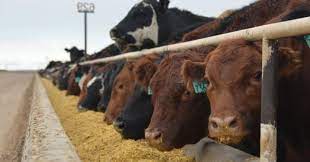David P. Anderson, Professor and Extension Economist, Texas A&M AgriLife Extension Service
It’s likely a surprise to some but beef production has exceeded that of a year ago since the week of April 6th. Beef production has been on an upward trajectory since February.
Slaughter levels and dressed weights are combined to boost beef production. Both fed steer and heifer dressed weights are more than 20 pounds greater than last year at this time. The counter-seasonally higher dressed weights are being fueled by more days on feed, good weather, and lower feed costs.
Beyond more total domestic beef production larger beef imports and reduced exports are boosting domestic beef supplies. Beef imports in the first quarter of the year totaled 1.2 billion pounds, 25 percent more than last year. Exports were 6 percent, or 46 million pounds, lower than last year. Combining the increase in imports and decrease in exports means that about an additional 285 million pounds of beef were added to total beef supplies in the first quarter. That’s about 0.86 pounds of beef, per capita. April beef trade won’t be released for another month but imports will likely exceed exports again further boosting beef supplies.
More beef production is likely the cause of some of the cutout’s struggles. The weekly average Choice cutout has been below $300 per cwt with most primal cuts struggling. Only the Choice chuck and round are above a year ago. The rib and loin are below a year ago and their weakness might suggest other problems beyond just larger supplies, especially getting close to Memorial Day.
On the positive side, this increase in beef production will be temporary. Reduced placements will begin to move the number of cattle on feed lower. If weights continue to be larger than a year ago, the total number of cattle processed will decline further.














